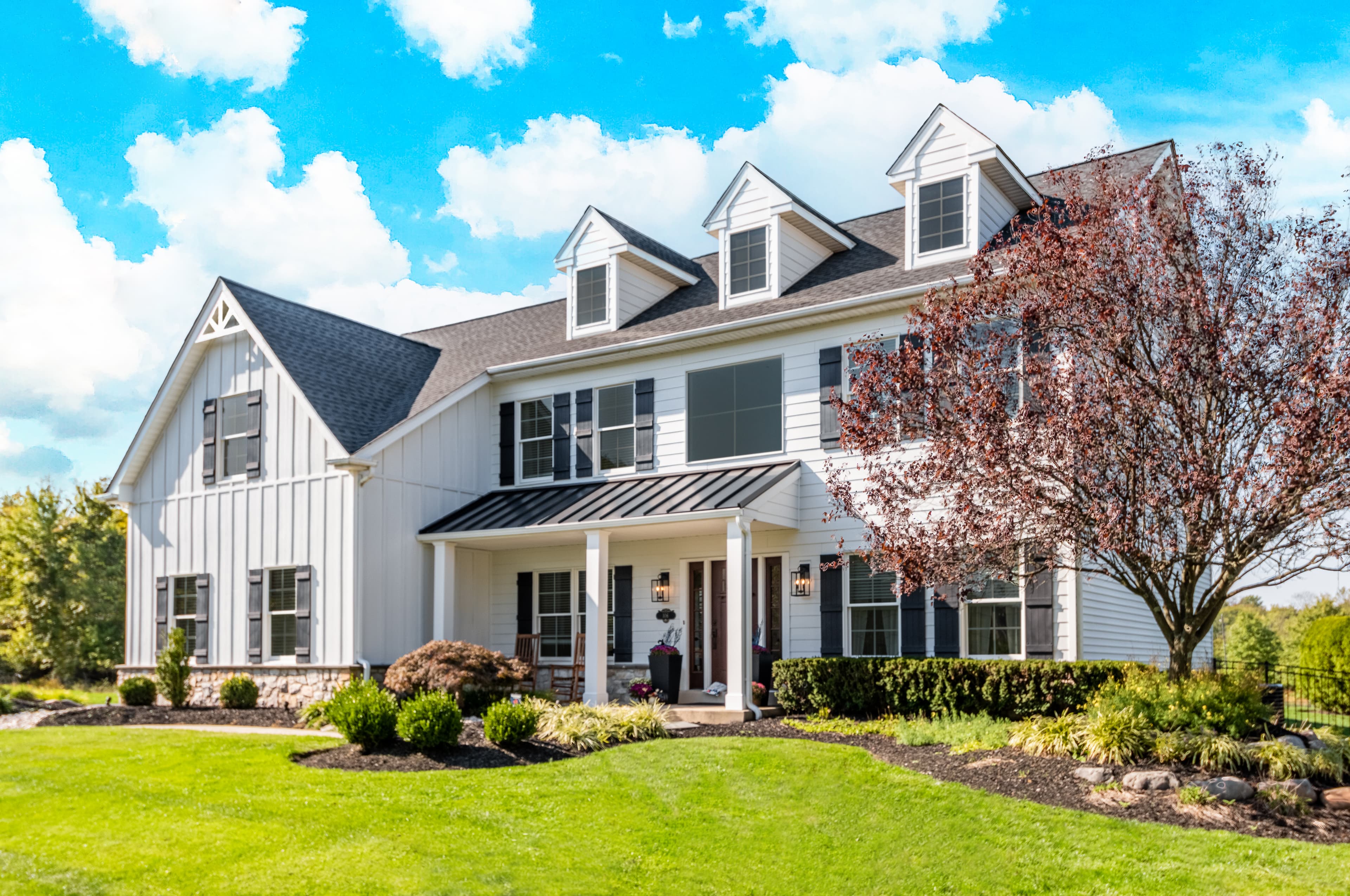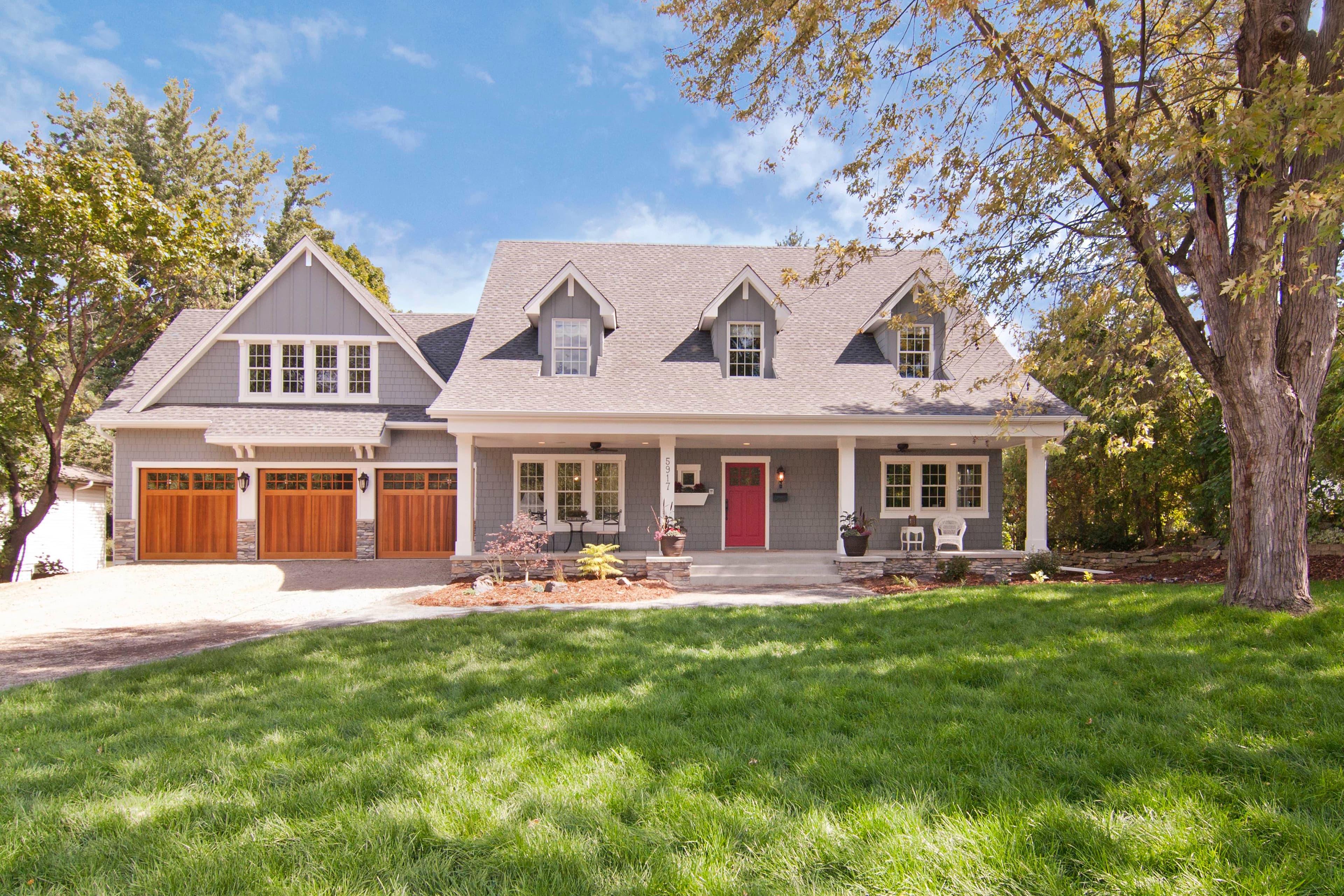Home Style Guide: Cape Cod
Discover the timeless charm and modern twists of Cape Cod homes. Learn about traditional features, siding profiles, and color combinations in our comprehensive guide.

With rectangular, symmetrical windows on either side of the door and a sturdy chimney, the Cape Cod architectural style is simple, classic, and oh-so-pleasing to the eye. Boasting a long history and timeless symmetry, it’s easy to update and never seems to go out of style. Cape Cod homes are a quintessential part of American architectural history.
Let’s delve into what makes these houses so enduring and beloved.
WHAT IS THE CAPE COD ARCHITECTURAL STYLE?
These charming and simple houses originated in the 17th century with the early settlers of New England. The style is known for its rectangular shape and symmetrical lines. Traditionally, these houses could be found along the coast in Massachusetts and take their name from the Cape Cod region where they are still popular and well-known.

Cape Cod architecture has evolved since its simple beginnings. Many new Cape Cod homes incorporate modern conveniences, such as larger windows, open floor plans, and garages. In the past, you might have needed to take a drive along the New England coast to see these beautiful houses, but these days they are a popular choice all over the country.
KEY ARCHITECTURAL FEATURES OF CAPE COD HOME
Traditionally, Cape Cod homes had very specific features. This guide should give you an idea of the more common features, but it’s not exhaustive, so you could still have a Cape Cod home even if it isn’t completely traditional or has a few extra features.

Houses were typically small, with one or one-and-a-half stories and a large central fireplace. The fireplace and chimney both gave the homes a beautiful symmetry and helped keep the houses warm during the long, cold New England winters. Snow easily slides off their classic steep-pitched roofs, preventing accumulation during cold weather. The dormer windows many Cape Cod homes are now known for are a much later addition to the style, popularized in the early 20th century.
In New England we have a lot of harsher weather, with temperatures swings as well as wood damage, and we're replacing a lot of that. When we do a Hardie® project, it's a complete exterior, which includes Hardie® trim, soffit, fascia. It's pretty much an easy sell.
Lynette Rogers
Owner, Homescapes of New England, LLC
The owners, often shipmen, would spend the long, cold winters at home working on the beautiful trim that Cape Cod houses are known for. Trim work, despite its ornamental sounding name, acted as a seal around windows and doors, reducing drafts to help retain heat and keeping water from leaking into the surrounding walls.
While historically the trim would have been expertly hand carved from wood, the salt and sea air of the New England region makes upkeep a challenge. Hardie® Trim boards provide resistance to wet and freezing conditions as well as hot, humid weather, making it a perfect alternative to wood for a beautiful finishing touch.
WHAT ABOUT COLORS AND SIDING?
Cape Cod houses feature distinctive siding profiles and color combinations that add to their timeless charm. The most common and traditional is shingle siding, but you can choose some slightly different options and still maintain that Cape Cod feel. Here are some traditional and modern interpretations.

Traditional Siding Profiles for a Cape Code home
The shingle shake exterior profile of the Cape Cod home is iconic, providing a rustic, charming look. When searching for that cedar shake profile, Hardie® Shingle siding adds timeless style in both a neat, straight edge panel or a more rugged, staggard edge panel, offering durability uniquely formulated to help resist moisture damage compared to traditional materials.

Other profiles popular with the Cape Cod home include plank lap and board-and-batten. Hardie® Plank Lap Siding provides a classic, clean appearance, while Hardie® Panel Siding, when paired with Hardie® Trim Batten boards, achieves the rustic board-and-batten look that has taken off in popularity the last few years.
Common Colors and Combinations for a Cape Code home
Known for their modest elegance, Cape Cod homes are traditionally clad in natural colors, such as muted blues and grays, as well as warm yellows and reddish browns. Trim was historically white, showcasing the simplicity originally innate in the architectural style.
Nowadays, a color contrasting the siding can act to highlight the architectural details of the house instead. Paired with dark shutters, the contrasting trim adds a pop of color and rustic charm to the house.

When it comes to color guidance, it can be helpful to request a sample so you can see how it’ll look in the lighting and weather that surrounds your home. Want to test out multiple colors? Try the Hardie™ Designer, powered by Hover®, and preview your design ideas on a rendered model of your actual home.
Modern Interpretations and Variations of the Cape Code home
The simplicity of Cape Cod homes makes it easy to embrace contemporary elements while maintaining their classic appeal.
Bright and unexpected colors, such as bold blues or greens, can be used to create a striking contrast with traditional architectural elements. Mixing and matching materials and profiles, such as using lap and shingle in different sections of the home can add both dimension and an eclectic touch to the façade of the home.
While historically trim has been white, in recent years, more dramatic color combinations have taken off. A darker or even matching trim can give the home a still traditional, yet updated look. Some homeowners are even doing away with the shutters that have long ornamented Cape Cod homes, opting to replace their shutters in favor of showing off their trim for a cleaner, more minimalist upgrade.

HELP ME IMAGINE MY HOUSE
Hardie® products are specifically engineered to help resist damage from moisture and rot, and will hold their own, come rain, sleet, or snow to help keep your Cape Cod home looking beautiful and in top shape.
If you’re struggling to picture how your house would look or wondering which color to use, the Hardie™ Designer, powered by Hover®, can help you visualize what your house would look like with a siding update. The complete collection of Hardie® sidings and colors are available to choose from, which means you can try out different combinations and get a really good idea of what you like before you commit to a certain look.
For more advice about how to care for and update your Cape Cod-style home, check out our guide on how to design your dream house or our color design guide for perfect color matches.
If your house is close to Cape Cod but not quite there, check out our guide on Colonial architecture. Colonial houses also feature simple symmetry and a rectangular shape, but with some key differences.